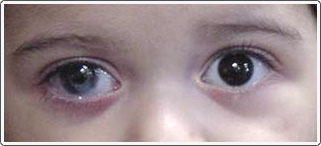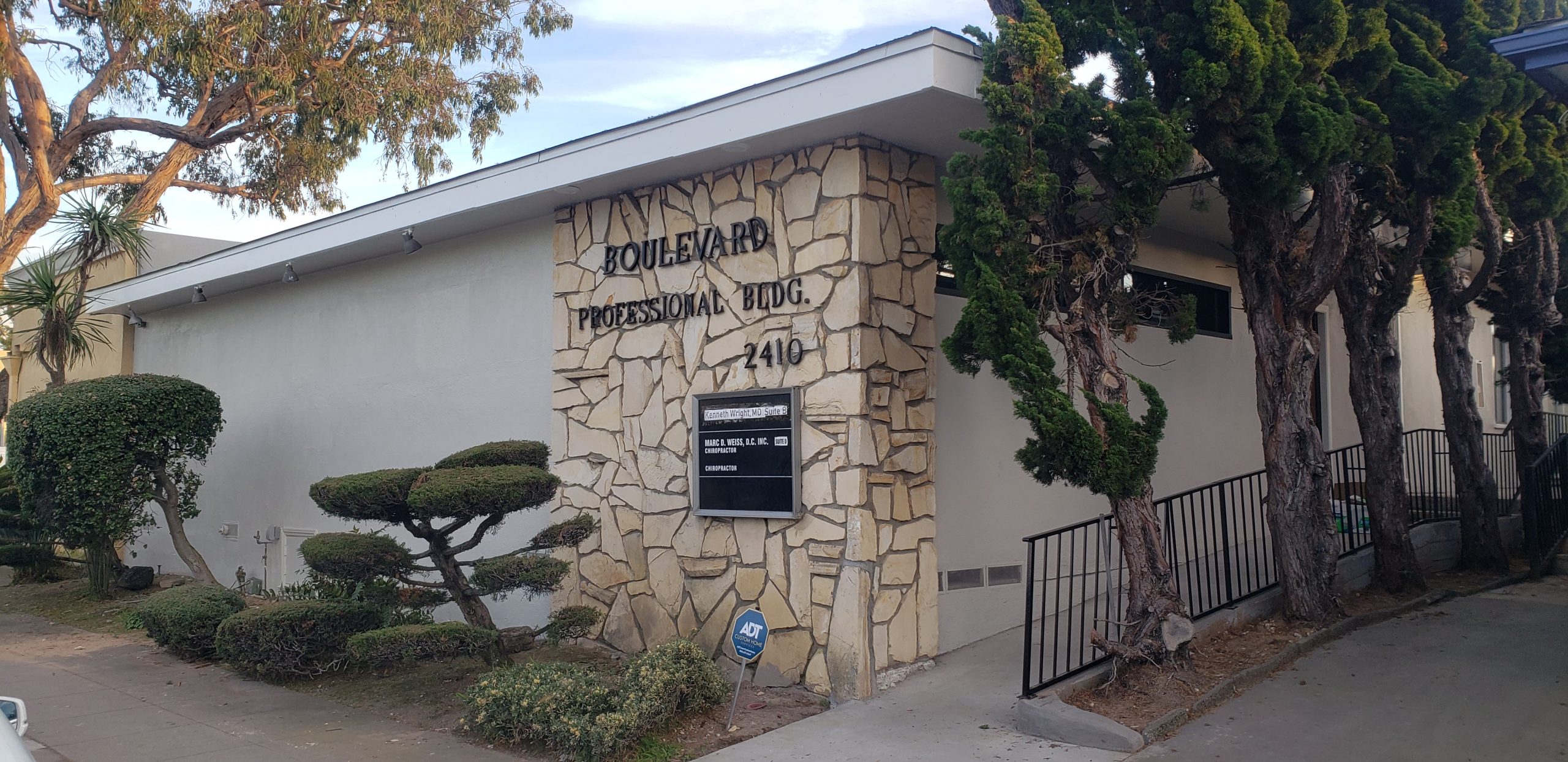
Young child with Peter’s anomaly, right eye. Note the whitish opacity on the cornea, which later required a corneal transplant. Patient also had a cataract that required removal and is currently being treated for glaucoma related to Peter’s anomaly. The patient wears a contact lens to try and improve the amblyopia caused from the cataract and corneal opacity. Patching of the good eye is being done.
Treatment of Peter’s anomaly depends on the severity of the opacity. If the opacity is bilateral and blocks the visual axis, nystagmus and dense bilateral amblyopia are common. Under these conditions, corneal transplantation is advised. The prognosis for corneal transplantation is guarded because of the complications of graft rejection and dense amblyopia. Because of the poor results with corneal transplantation, patients with unilateral Peter’s anomaly are often treated conservatively without surgery if at all possible. Even so, some unilateral cases require early intervention. Because of the high incidence of glaucoma associated with Peter’s anomaly, these children require constant follow-up to make sure the pressures are under control. Vision in the affected eye varies, but is usually poor secondary to the glaucoma and dense amblyopia.


Chandler, one of a triplet, was born with Peter’s anomaly, left eye. He required corneal surgery to release some scarring that was causing increased intraocular pressure and corneal clouding. Corneal surgery went well and a transplant was not required. Because of blocked vision, however, the patient developed dense amblyopia and esotropia. Strabismus surgery was done to straighten the eye and patching therapy was started. Note the placement of the light reflexes in the two photos. In the picture on the right (after strabismus surgery) the reflexes are centered and normal. Today, patient is doing extremely well with straight eyes and much improved vision in the left eye.

